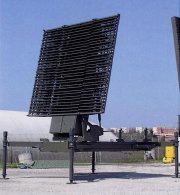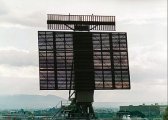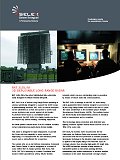RAT-31 DL/M
Description of the radar set, tactical-technical characteristics
| Specifications | |
|---|---|
| frequency: | D-Band
(former L-Band) |
| pulse repetition time (PRT): | |
| pulse repetition frequency (PRF): | |
| pulsewidth (τ): | |
| receive time: | |
| dead time: | |
| peak power: | 84 kW |
| average power: | |
| instrumented range: | 270 NM |
| range resolution: | |
| accuracy: | |
| beamwidth: | |
| hits per scan: | 1 to 3 |
| antenna rotation: | 10 s |
| MTBCF: | |
| MTTR: | |
RAT-31 DL/M
SELEX Sistemi Integrati, a Finmeccanica company, signed an agreement with the Procurement department of the Ministry of Defence of the Federal Republic of Germany (BWB), to supply two L-Band Long Range 3D air surveillance Mobile Radars (RAT 31 DL/M) for the German Air Force.
The contract (about 50,000,000 €) has been totally financed by German national funds and the supply is expected to be completed by 2007. SELEX Sistemi Integrati has been selected among highly qualified world-wide competitors. The RAT 31 DL/M Radar systems ordered by the BWB are the first of this model ever sold to a NATO country, totally responding to the latest ACCS criteria and standards.
RAT 31 DL/M Radar systems are based on the technology used for the RAT 31 DL/FADR (Fixed Air Defence Radar) systems, in service or on delivery to a large number of NATO/European and extra European countries, both in fixed or transportable configuration. The compact L-Band RAT 31 DL/M Radar system derives from successful RAT 31 DL, a NATO standard, already selected by eight countries. The current production of these systems carries the highest maturity and technological level.
The RAT 31 DL/M Radar systems, consisting of a foldable antenna and a shelter, both in two ISO 20 ft packages, can be transported in one A400M type aircraft as well as on truck and rail. This configuration allows for a high degree of mobility and fast deployment/re-deployment of the system, which is carried out autonomously, without external cranes or other on-site technical support, also on unprepared sites.
The solid-state phased array monopulse radar has got an antenna with an area of 77 m² (11 m·7 m). It works with 42 rows with 52 radiators per row and 42 transmitter/receiver modules with a power of 2 kilowatts. Further advantage is gained from the beam-forming technique used (squintless electronic phase scanning in elevation) which allows the simultaneous independent management of the system's four transmission beams without any break in the frequency band. The detection envelope a 360° in azimuth (a mechanically 6 rpm rotation) up to a range of 270 nautical miles and an altitude up to 92 kft. The RAT-31DL/M includes a fully integrated SIR-M secondary monopulse radar with a maximum range up to 250 nautical miles.



